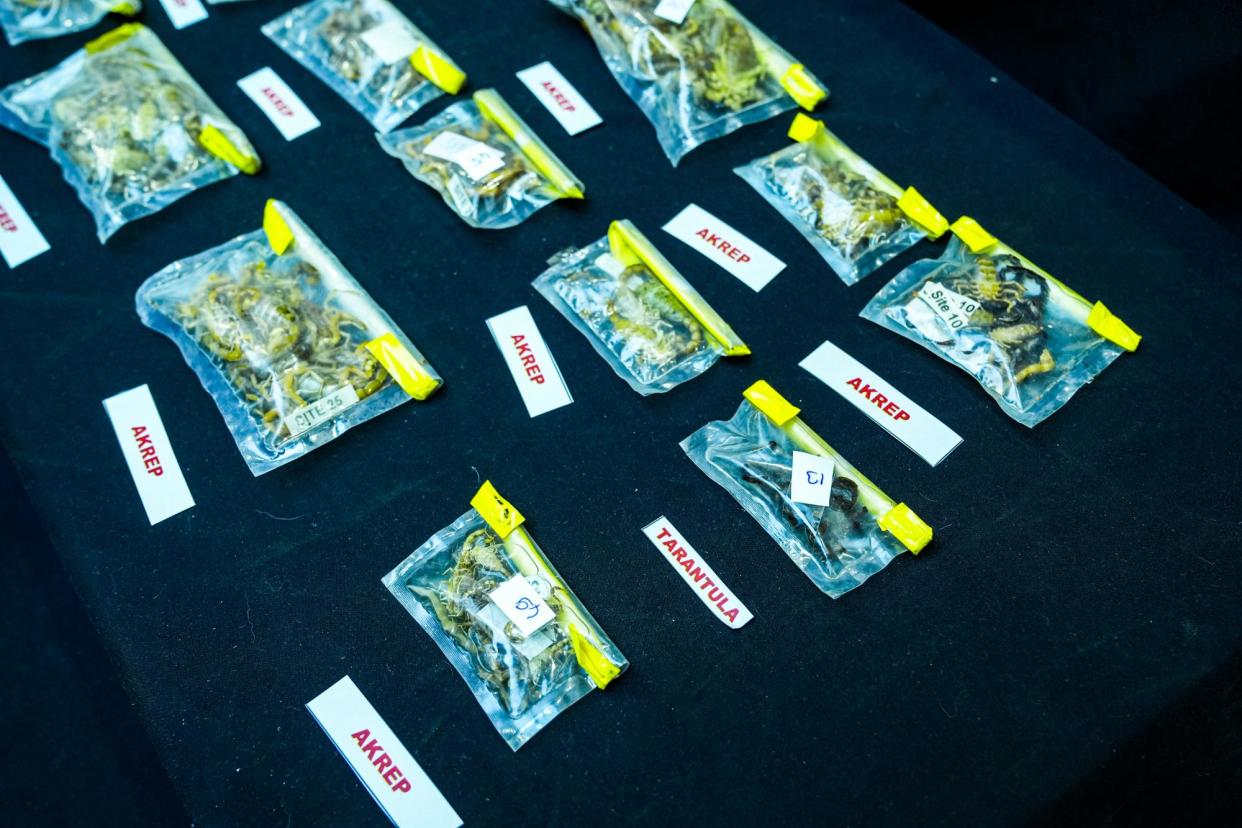US museum curator accused of trying to smuggle spider and scorpion samples out of Turkey

A scorpion and spider expert with the American Museum of Natural History was detained in Istanbul on Monday while allegedly attempting to smuggle samples of both arachnida groups out of Turkey.
Lorenzo Prendini was held by police at Istanbul airport for allegedly trying to take about 1,500 samples out of the country, Turkish media reported.
Video published by the Demiroren News Agency showed officers searching hand luggage and removing plastic bags that appeared to be packed with dead spiders and scorpions.
The museum’s website lists Prendini as the curator of its spider, scorpion, centipede and millipede collections, and says his research into spiders and the classification of scorpions, has taken him to more than 30 countries.
Prendini’s specialisations include research into arachnid orders of whip spiders, sun spiders and whip scorpions. Spiders and scorpions are considered to be biologically distant cousins.
The museum, which has been contacted for comment, has recently found itself at the center of a series of disputes that found it, and other institutions focusing ethnographic histories, in the cross-hairs of shifting cultural expectations.
In January, it shut down two halls featuring Native American artifacts and acknowledged that the diorama exhibits on display at its Manhattan’s Upper West Side complex were “severely outdated”.
That came after new director Sean Decatur, the first African American to lead the institution, announced that the museum’s holdings of 12,000 human remains, many collected under circumstances now seen as abusive and racist, would be returned where possible.
All human bones on public display were removed, and the museum vowed to devote more resources to studying the collection to determine the origins and identities of remains.
Two years ago, the museum removed a statue of Theodore Roosevelt that had stood at the entrance because it depicted the former US president alongside two smaller Black and Indigenous figures. The statue, erected in 1940, had been a point of contention for decades. It was moved to the Theodore Roosevelt Presidential Library in North Dakota.

